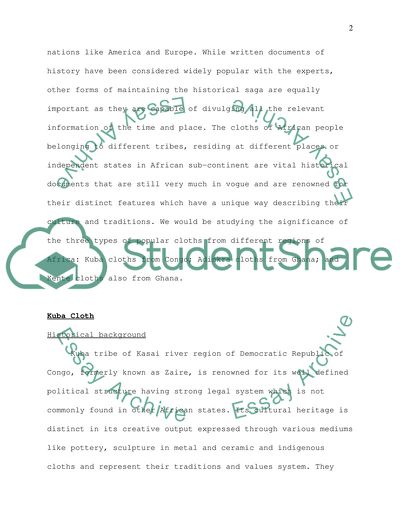Cite this document
(The Aspects of African Textiles Essay Example | Topics and Well Written Essays - 3000 words, n.d.)
The Aspects of African Textiles Essay Example | Topics and Well Written Essays - 3000 words. https://studentshare.org/culture/1714959-african-textiles
The Aspects of African Textiles Essay Example | Topics and Well Written Essays - 3000 words. https://studentshare.org/culture/1714959-african-textiles
(The Aspects of African Textiles Essay Example | Topics and Well Written Essays - 3000 Words)
The Aspects of African Textiles Essay Example | Topics and Well Written Essays - 3000 Words. https://studentshare.org/culture/1714959-african-textiles.
The Aspects of African Textiles Essay Example | Topics and Well Written Essays - 3000 Words. https://studentshare.org/culture/1714959-african-textiles.
“The Aspects of African Textiles Essay Example | Topics and Well Written Essays - 3000 Words”. https://studentshare.org/culture/1714959-african-textiles.


